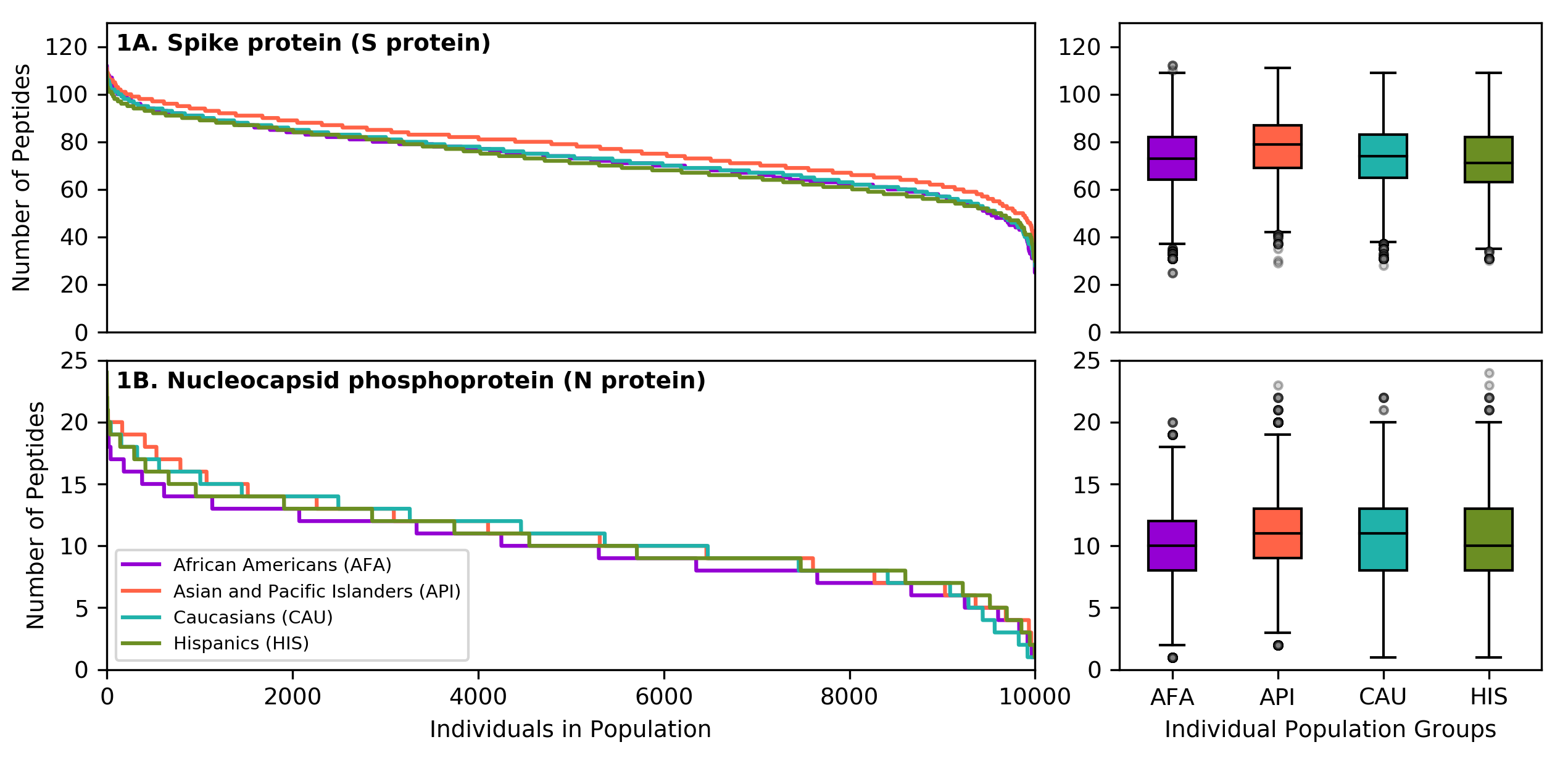Effect of HLA Class II Polymorphism on Predicted Cellular Immunity Against SARS-CoV-2 at the Individual Level and Within Twenty Five Race/ethnic Groups
1Department of Surgery, University of Cambridge, Cambridge, United Kingdom, 2Department of Pathology, Tulane University School of Medicine, New Orleans, LA, 3European Bioinformatics Institute (EMBL-EBI), Hinxton, United Kingdom
Meeting: 2021 American Transplant Congress
Abstract number: LB 6
Keywords: African-American, Infection, T cell activation, T cells
Topic: Clinical Science » Infectious Disease » COVID-19
Session Information
Session Name: Late-Breaking: COVID-19
Session Type: Rapid Fire Oral Abstract
Date: Monday, June 7, 2021
Session Time: 4:30pm-5:30pm
 Presentation Time: 4:55pm-5:00pm
Presentation Time: 4:55pm-5:00pm
Location: Virtual
*Purpose: Development of adaptive immunity after COVID-19 and after vaccination against SARS-CoV-2 is predicated on recognition of viral peptides, presented on HLA class II molecules, by CD4+ T-cells. The aim of this study was to investigate the role of HLA polymorphism on SARS-CoV-2 immunogenicity at the population and the individual level.
*Methods: We capitalised on extensive high-resolution HLA data from 8.9 million donors in the NMDP/BeTheMatch registry to estimate HLA Class II haplotype frequency distributions for twenty five human race/ethnic populations. This information was used to generate multi-locus HLA class II genotypes for each population group (ten random samples of 10,000 individuals for each population). NetMHCIIpan4.0 was used to assess peptide presentation from the entire SARS-CoV-2 Proteome.
*Results: Within populations, we found wide inter-individual variability in predicted CD4+ T-cell reactivity against structural, non-structural and accessory SARS-CoV-2 proteins, according to individual HLA genotype. This was particularly pronounced for Nucleocapsid and specific non-structural proteins, whereas robust reactivity against Spike, the main vaccination target, was predicted despite significant variation in Spike-derived peptide presentation by individual HLA genotypes (Figure 1). Notably, we found similar potential for anti-SARS-CoV-2 cellular immunity at the population level suggesting that HLA polymorphism is unlikely to account for observed disparities in clinical outcomes after COVID-19 among different race/ethnic groups.
Figure 1. Panels depict the number of SARS-CoV-2 peptides presented by individual HLA class II genotypes in simulated populations of 10,000 individuals for four broad population groups (African Americans, Asian and Pacific Islanders, Caucasians and Hispanics) for 1A. Spike Glycoprotein, 1B. Nucleocapsid phosphoprotein.
*Conclusions: Our findings provide important insight on the potential role of HLA polymorphism on development of protective immunity after SARS-CoV-2 infection and after vaccination and a firm basis for further experimental studies in this field.
To cite this abstract in AMA style:
Copley HC, Gragert L, Leach AR, Kosmoliaptsis V. Effect of HLA Class II Polymorphism on Predicted Cellular Immunity Against SARS-CoV-2 at the Individual Level and Within Twenty Five Race/ethnic Groups [abstract]. Am J Transplant. 2021; 21 (suppl 3). https://atcmeetingabstracts.com/abstract/effect-of-hla-class-ii-polymorphism-on-predicted-cellular-immunity-against-sars-cov-2-at-the-individual-level-and-within-twenty-five-race-ethnic-groups/. Accessed January 7, 2026.« Back to 2021 American Transplant Congress

